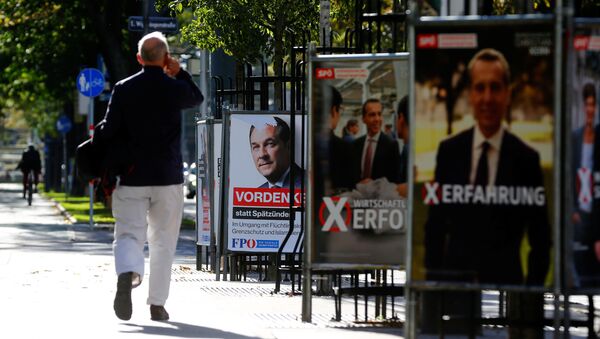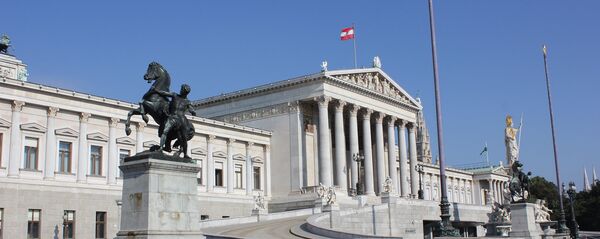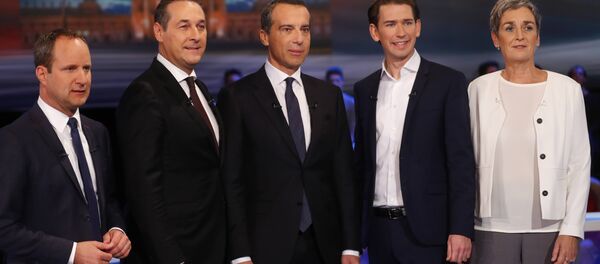MOSCOW (Sputnik) — Austrian citizens will go to polls on Sunday to elect the members of the National Council (Nationalrat), the lower house of the Austrian Parliament, which might result in a coalition government, including the right-wing Freedom Party of Austria (FPO).
Foreign Minister Sebastian Kurz called for a snap election after being chosen as the new leader of the conservative Austrian People's Party (OVP) in May amid tensions with a coalition partner, the left-wing Social Democratic Party (SPO). The foreign minister, who at 31 may become one of the youngest European leaders in modern history if his party wins the election, also announced that he would replace the regular OVP constituency selection process with a list of independent candidates backed by the party.
Potential Coalitions
Kurz's personal popularity and rebranding efforts seem to have propelled the OVP to the top of the polls. The party's ratings have grown since mid-May, from 18–19 percent to 33 percent in the most recent surveys.
A Research Affairs poll earlier in October predicted that the FPO would land in second place with 27 percent, behind the OVP and its 33 percent, but ahead of the SPO and its 23 percent. According to an OGM poll, the OVP, SPO, and FPO might stand to gain 33, 27, 25 percent of the vote, respectively. Market poll also predicts 33 percent for the OVP, but found that the FPO may only get 25 percent, with the SPO slightly behind with 24 percent.
Neither the OVP nor the SPO has ruled out a coalition with the FPO. Unlike the right-wing Alternative for Germany (AfD) or National Front (FN) in France, the FPO has already been part of a ruling coalition in the past.
In June, the SPO dropped the ban on forming a coalition with the far-right, saying they would consider any alliance partner provided they corresponded to a certain number of requirements. However, the FPO would have to adjust its policies significantly if it wanted to join the left-wing Social Democrats.
This year, 16 political parties are participating in the election. Apart from the OVP, the SPO and the FPO, Peter Pilz's List, formed by the former member of the Green, the New Austria and Liberal Forum (NEOS), and the Green themselves may expect to get slightly above or below 5 percent of the vote.
Technical Details
All 183 seats at the National Council will be contested. Austria uses a proportional representation system for their election, which means that each political party will receive a number of seats roughly corresponding to the percentage of the vote it has won.
The nine states of Austria are regional electoral districts, further subdivided into 43 local electoral districts. Austria uses an open-list system, which allows voters to show their preference for a particular candidate.
All Austrians over the age of 16 may vote.




